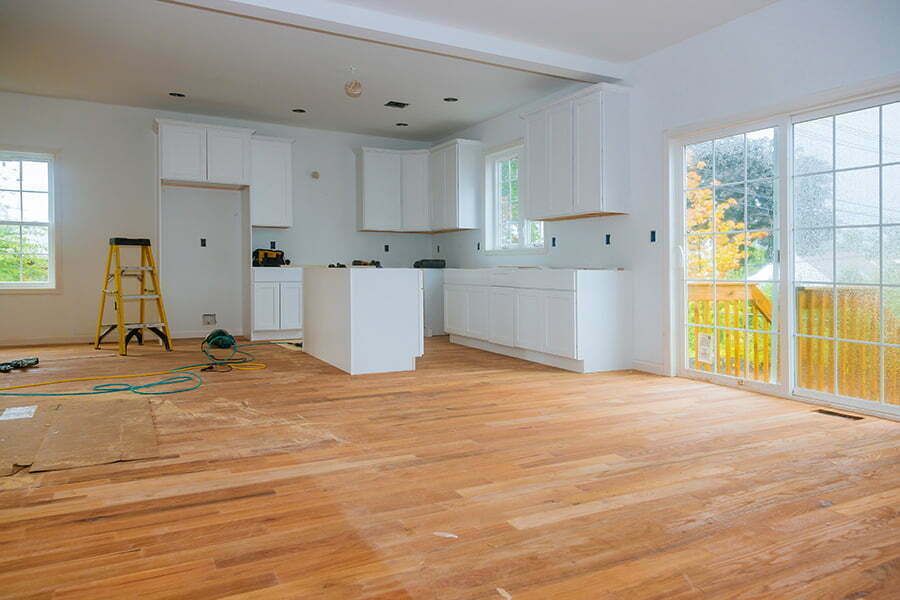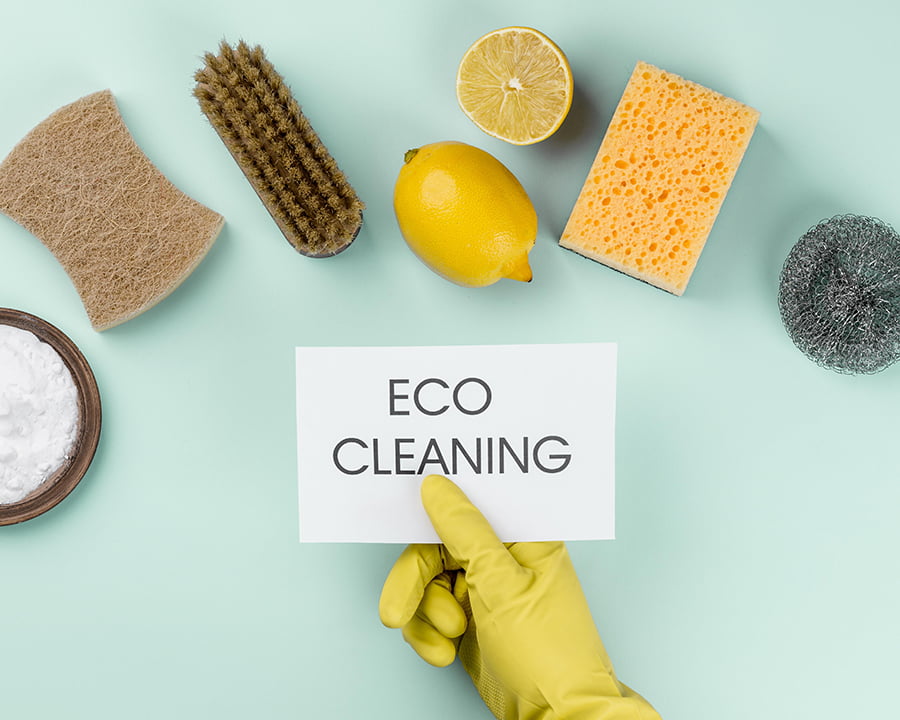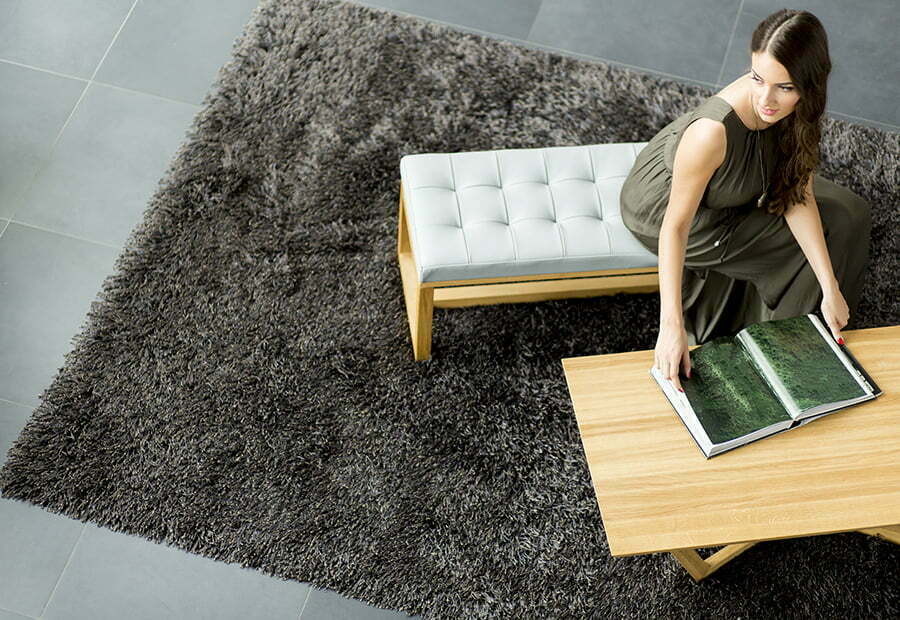Discover the easy steps to choosing low-VOC materials and products for a healthier home with our expert guide.
As a child, I remember the smell of freshly painted walls in our home. The aroma was so strong that it would linger for days, making me feel dizzy and nauseous.
Little did I know that the source of my discomfort was volatile organic compounds (VOCs) emitted by the paint.
Years later, as an adult and a blogger who writes about home air quality, I have come to understand the impact of VOCs on indoor air quality and human health. VOCs are toxic chemicals released by many common household products such as paints, adhesives, cleaning agents, and even furniture.
The good news is that there are low-VOC alternatives available for almost every product category. In this article, we will explore why you should choose low-VOC materials and products for your home and how to select them wisely.
So let’s dive in!
The Hidden Dangers of VOCs

While the smell of freshly painted walls may seem harmless, it can actually be a sign of hidden dangers lurking in your home. VOCs are chemicals that evaporate at room temperature and can cause a range of health problems such as headaches, dizziness, respiratory issues, and even cancer.
As I learned from my childhood experience with paint fumes, VOCs can have immediate effects on our health. But what’s more concerning is their long-term impact on indoor air quality.
Many household products continue to release low levels of VOCs for months or even years after installation or use. The good news is that there are ways to reduce exposure to these harmful chemicals by selecting low-VOC materials and products for your home.
By making informed choices about the items we bring into our homes, we can create healthier living spaces for ourselves and our families.
Understanding Low-VOC Materials

Low-VOC materials are those that emit fewer volatile organic compounds than their traditional counterparts. These products have become increasingly popular in recent years as people become more aware of the impact of indoor air quality on their health.
When selecting low-VOC materials, it’s important to understand that not all “green” or “eco-friendly” labels mean the same thing. Some manufacturers may use these terms loosely without any certification or third-party verification.
To ensure you’re getting a truly low-VOC product, look for certifications such as GreenGuard Gold Certification and FloorScore Certification which test for emissions from building materials and furniture respectively.
By choosing low- VOC options for your home renovation projects, you can reduce your exposure to harmful chemicals while still achieving beautiful results!
Choosing the Right Paints and Finishes

When it comes to selecting low-VOC materials for your home, one of the most important areas to focus on is paint and finishes. As I mentioned earlier, traditional paints can emit high levels of VOCs that can cause a range of health problems such as headaches, dizziness, and respiratory issues.
Thankfully there are now many low-VOC options available in the market. When choosing a paint or finish for your walls or furniture look out for products labeled “low-VOC” or “zero VOC”.
These products contain fewer harmful chemicals than their traditional counterparts.
But don’t just rely on labels alone; always check the product’s ingredients list before making a purchase. Look out for specific chemicals like formaldehyde and benzene which are known carcinogens found in some paints.
Another thing to keep in mind when selecting paints is that darker colors tend to have higher levels of VOCs than lighter shades due to the pigments used. So if you’re looking at painting an entire room with dark hues consider using low-odor water-based acrylic latex instead.
By choosing low-VOC materials like these you’ll not only be creating healthier indoor air quality but also reducing your exposure to toxic substances commonly found in household items – something we all want!
Flooring Options for a Healthier Home

When it comes to selecting low-VOC materials for your home, flooring is an important consideration. As a child, I remember the excitement of getting new carpets installed in our home.
However, what we didn’t know at the time was that many carpets contain high levels of VOCs from adhesives and synthetic fibers. Thankfully today there are plenty of low-VOC options available for flooring such as hardwood floors finished with water-based sealers or natural linoleum made from renewable resources like linseed oil and cork dust.
These options not only reduce exposure to harmful chemicals but also provide a more sustainable choice for your home. Another great option is carpet tiles made from recycled materials with low-VOC adhesives or wool carpets which are naturally flame-resistant and hypoallergenic.
When shopping for flooring products look out for certifications such as FloorScore® which indicates that they meet strict indoor air quality standards set by third-party organizations. By choosing low-VOC flooring options you can create a healthier environment in your home while still enjoying beautiful design choices!
Furniture Selection: Style Meets Safety

When it comes to selecting furniture for your home, style and comfort are often the top priorities. However, it’s important not to overlook safety and health concerns when making these choices.
Many pieces of furniture contain VOCs in their adhesives or finishes that can off-gas into your indoor air over time. To ensure you’re choosing low-VOC options for your home furnishings, look for products made from natural materials such as solid wood or bamboo instead of particleboard or MDF (medium-density fiberboard).
These materials are less likely to contain formaldehyde-based adhesives that release harmful chemicals into the air. Consider purchasing furniture with water-based finishes rather than oil-based ones.
Water-based finishes have lower levels of VOCs and tend to be more environmentally friendly overall. By prioritizing low-VOC options when selecting new pieces of furniture for your home, you can create a safer living environment without sacrificing style or comfort.
Eco-Friendly Cleaning Products

When I first learned about the harmful effects of VOCs, I started looking for ways to reduce my exposure to these chemicals. One of the easiest changes I made was switching to eco-friendly cleaning products.
Conventional cleaning agents are often loaded with VOCs that can cause respiratory problems, headaches, and other health issues. Eco-friendly alternatives use natural ingredients such as vinegar, baking soda, and essential oils that are safe for both humans and the environment.
When selecting eco-friendly cleaning products look for labels like “non-toxic,” “biodegradable,” or “plant-based.” You can also make your own cleaners using simple ingredients found in your pantry. For example:
Mix equal parts water and white vinegar in a spray bottle for an all-purpose cleaner
Sprinkle baking soda on carpets before vacuuming to deodorize them
By choosing low-VOC materials and products like eco-friendly cleaners you’re not only protecting yourself but also contributing towards a healthier planet!
Green Building Materials to Consider

If you’re like me, you want to create a healthy home environment for yourself and your loved ones. One way to achieve this is by selecting green building materials that are low in VOCs.
These materials not only improve indoor air quality but also reduce the environmental impact of your home.
When I was renovating my house last year, I made sure to choose low-VOC paints and finishes for the walls and floors. Instead of traditional carpeting, which can emit harmful chemicals into the air over time, I opted for natural wool rugs with non-toxic backing.
Another great option is using sustainable wood products such as bamboo or reclaimed wood instead of conventional hardwood flooring or furniture made from particleboard with formaldehyde-based adhesives.
By choosing these eco-friendly options when building or renovating your home, you can significantly reduce exposure to toxic chemicals while creating a healthier living space that benefits both people and planet alike.